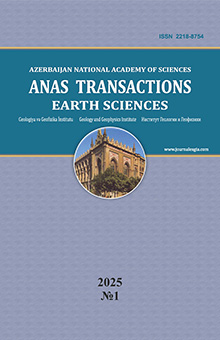Application of seismic refraction survey for engineering site characterizations of Weyto dam construction site, Southern Ethiopia
Mulualem A.1, Demsie T.1, Shano L.2, Getahun E.2, Solomon H.3
1 Department of Geology, College of Natural Sciences, Debre Markos University, Debre Makos, Ethiopia: abraham_mulualem@dmu.edu.et; muluabr4114@gmail.com
2 Department of Geology, College of Natural Sciences, Injibara University, Injibara, Ethiopia
3 Addis Ababa Design and Construction Works Bureau, Addis Ababa, Ethiopia
DOI: 10.33677/ggianas20250100144
Summary
The study area is geographically situated within the Southern Nations, Nationalities, and Peoples' Region (SNNPR), specifically encompassing portions of the Segen Zone and the South Omo Zone. It lies within the Benetsemay Woreda, in close proximity to the established urban center of Weyto Town. The terrain of the study area presents a topographically rugged landscape. Notably, this region forms an integral segment of the extensive Southern Main Ethiopian Rift System, a significant geological feature marked by considerable tectonic activity. To gain a comprehensive understanding of the subsurface characteristics at the proposed Weyto Dam construction site, a series of seismic refraction surveys were meticulously conducted. The geophysical survey was executed utilizing a sophisticated 24-channel refraction wave instrument, the Seis-24, a tool specifically designed to generate detailed velocity sections of the subsurface at the prospective dam construction location. The study area is distinguished by a multifaceted geological setting, exhibiting a diverse array of intricate tectonic structures and a variety of distinct geological formations. These formations include fine-grained aphanitic basalt, various clastic sediments, metamorphic gneiss, porphyritic basalt and accumulations of pyroclastic deposits. The application of the seismic refraction survey proved instrumental in effectively identifying the different subsurface units based on the analysis of their compressional wave velocity values and the determined thicknesses of these layers. The acquired data revealed that the seismic refraction survey successfully achieved a maximum depth of investigation reaching approximately 100 meters within the defined study area, providing valuable insights into the subsurface architecture relevant to the proposed dam project.
Keywords: Dam, geophysical survey, subsurface, compressional wave, foundation
REFERENCES
Bawuah G., Baffoe E., Darko B., Hadir I. A.A., Ogbetuo D. The use of seismic refraction survey in geotechnical investigations. International Journal of Engineering Research and Science, Vol. 4(7), 2018, pp. 6-17.
Bihon K. Factors affecting agricultural production in Tigray region, Northern Ethiopia. PhD thesis, Uuniversity of South Africa, 2015.
Fell R., MacGregor P., Stapledon D. Geotechnical engineering of dams. Taylor and Francis Group PLC. London, UK, 2005, pp. 180-181.
Ivan A., Samuel H. Techniques for prevention and detection of leakage in dams and reservoirs, Venezuela, 1987.
Levitte D., Columba J., Mohr P. Reconnaissance geology of the Amaro horst, Southern Ethiopian rift. Geological society of America Bulletin, Vol. 85(3), 1974, pp. 417-422.
Long-term benefits and performance of dams. British Dam Society 13 Conference, 2004, Canterbury, Kent, Thomas Telford. London, 676 p.
Telford W.M., Geldart L.P., Sheriff R.E., Keys D.A. Applied geophysics. Cambridge University Press. 1976.
DOI: 10.33677/ggianas20250100144
